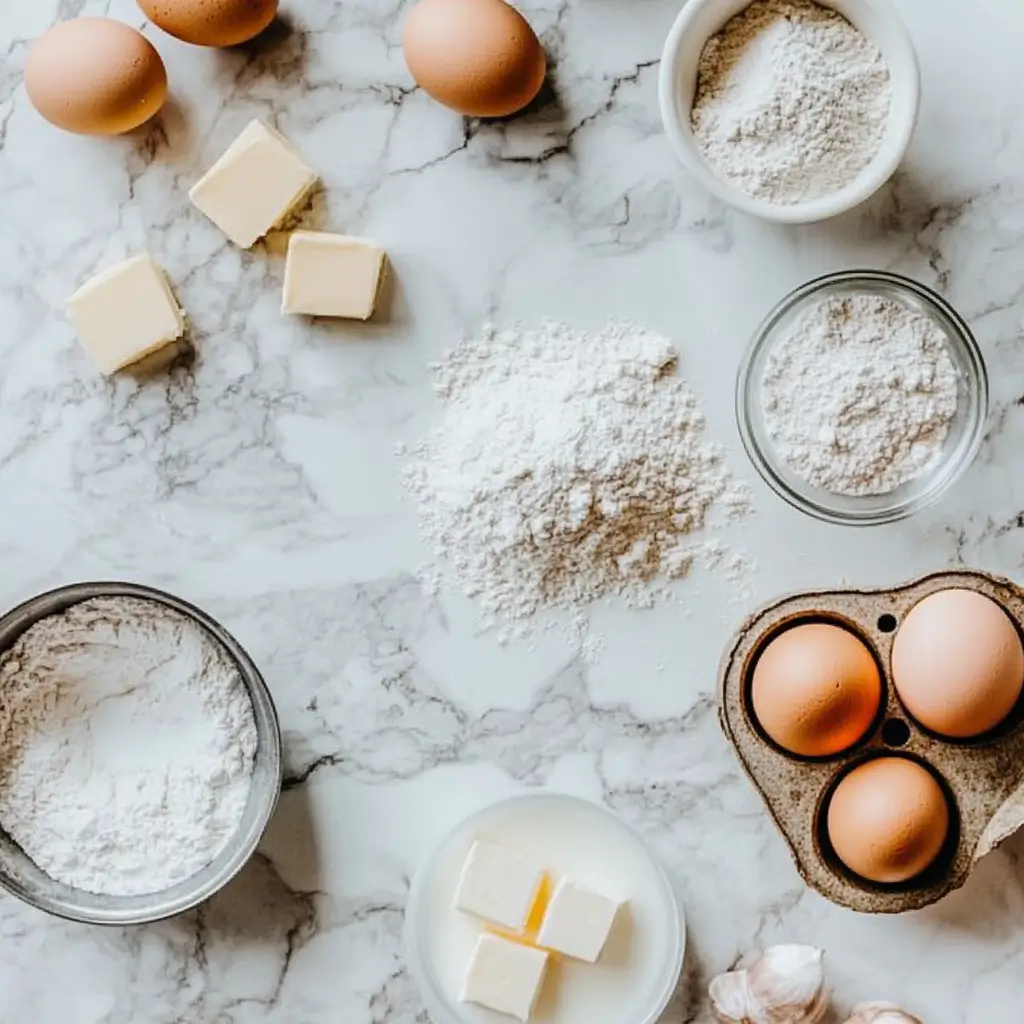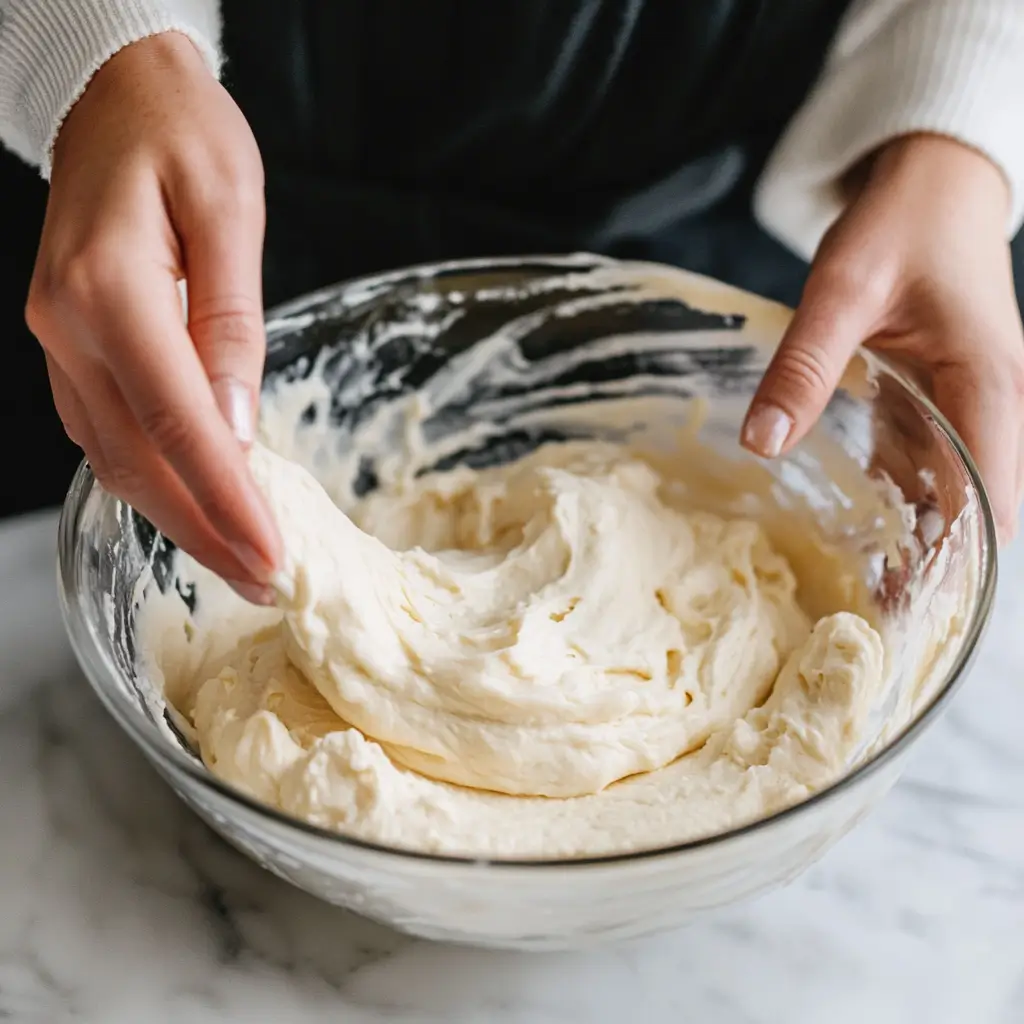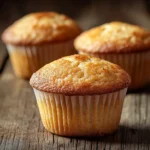There’s something incredibly satisfying about biting into a freshly baked muffin that’s light, airy, and melts in your mouth. However, many home bakers struggle with achieving that perfect fluffy texture. Instead, they end up with dense, dry, or flat muffins. So, what is the secret to fluffy muffins? It’s not just one trick—it’s a combination of carefully selected ingredients, precise mixing techniques, and proper baking methods.
In this article, we’ll break down the science behind fluffy muffins, uncover expert baking techniques, and share step-by-step methods to help you create bakery-quality muffins at home. Whether you’re a beginner or an experienced baker, these tips will transform your muffins from ordinary to extraordinary.
Table of Contents
Essential Ingredients for Fluffy Muffins
Achieving that signature fluffy texture starts with understanding how each ingredient affects the final product. From leavening agents to moisture-retaining elements, the right combination is key. Below, we’ll explore the must-have ingredients and how they contribute to light, airy muffins.
1. The Role of Leavening Agents
Leavening agents create the rise and structure of muffins. If you’ve ever wondered why some muffins turn out beautifully domed while others fall flat, the answer often lies in how well these agents are used.
- Baking Powder vs. Baking Soda:
- Baking powder is a complete leavening agent containing both an acid and a base. It activates when mixed with liquid and again when exposed to heat.
- Baking soda, however, requires an acidic ingredient like buttermilk or lemon juice to activate. It reacts immediately when combined with acid, producing carbon dioxide bubbles that help muffins rise.
- Why Correct Measurements Matter:
- Too much leavening can cause muffins to rise too quickly and collapse.
- Too little leavening results in dense, heavy muffins.
- The ideal ratio is 1 teaspoon of baking powder per cup of flour or ¼ teaspoon of baking soda per cup of flour (when paired with acidic ingredients).
- The Freshness Test:
- Baking powder and soda lose potency over time. To check freshness, mix a teaspoon of baking powder with hot water. If it fizzes, it’s still active.
2. Why Eggs Matter in Muffins
Eggs play a critical role in muffin structure, helping bind ingredients together while adding moisture and lift.
- Do eggs help muffins rise? Absolutely! The proteins in eggs solidify during baking, providing structure while trapping air pockets that contribute to fluffiness.
- Egg Substitutes for Fluffy Vegan Muffins:
- ¼ cup unsweetened applesauce
- 1 tablespoon ground flaxseed mixed with 3 tablespoons water
- ¼ cup mashed banana (adds slight banana flavor)
- Room Temperature vs. Cold Eggs:
- Cold eggs don’t incorporate well into batter, leading to uneven texture.
- For best results, place eggs in a bowl of warm water for 5 minutes before using them.
3. The Importance of Fat (Butter vs. Oil)
Fat plays a major role in keeping muffins soft and preventing dryness. However, the choice between butter and oil affects both flavor and texture.
- Butter vs. Oil:
- Butter: Adds a rich flavor and slightly firmer texture.
- Oil: Produces a more tender, moist muffin. Vegetable, canola, or melted coconut oil works well.
- The Best of Both Worlds: Many professional bakers use a mix of butter and oil—butter for flavor, oil for moisture.
- Secret Ingredient: Greek Yogurt or Buttermilk
- Greek yogurt makes muffins creamy and tender.
- Buttermilk adds slight acidity, activating baking soda for better rise.

Step-by-Step Guide: what is the secret to fluffy muffins?
Perfectly risen muffins don’t happen by chance. They require precise mixing techniques, the right consistency, and careful baking.
1. Proper Mixing Techniques
Overmixing is the #1 reason muffins turn out dense. The goal is to mix the batter just enough to combine the ingredients.
- The Muffin Method (Best Mixing Technique)
- Step 1: Whisk dry ingredients (flour, baking powder, baking soda, salt) in one bowl.
- Step 2: Whisk wet ingredients (eggs, milk, oil, vanilla) in another bowl.
- Step 3: Gently fold wet ingredients into dry ingredients using a spatula. Stop mixing when streaks of flour just disappear.
- What Happens If You Overmix?
- Overmixing develops gluten, making muffins tough and chewy.
- Instead of light, fluffy muffins, you’ll end up with dense, bready muffins.
2. The Ideal Muffin Batter Consistency
Muffin batter should be thicker than cake batter but not too dry. It should hold its shape when scooped but still be easy to spoon into muffin tins.
| Ingredient | Amount | Notes |
|---|---|---|
| All-Purpose Flour | 2 cups | Spoon and level for accuracy |
| Baking Powder | 2 tsp | Ensures rise |
| Baking Soda | ½ tsp | Works with acidic ingredients |
| Salt | ¼ tsp | Balances sweetness |
| Eggs | 2 large | Room temperature |
| Sugar | ¾ cup | Adjust for sweetness preference |
| Milk or Buttermilk | 1 cup | Adds moisture |
| Melted Butter or Oil | ½ cup | Keeps muffins soft |
| Vanilla Extract | 1 tsp | Enhances flavor |
- The Resting Trick: Let the batter sit for 10 minutes before baking. This allows the flour to absorb moisture, resulting in a softer texture.

3. Baking Temperature Secrets
The right oven temperature makes a huge difference in muffin fluffiness.
- What temperature should you bake muffins at?
- Start at 425°F (218°C) for 5 minutes to create an initial rise.
- Reduce to 350°F (177°C) for the remaining time to bake evenly.
- Why High Heat at the Start?
- The sudden blast of heat causes rapid steam formation, which lifts the batter and creates tall, domed muffins.
- Oven Door Rule: Never open the oven door before 10 minutes of baking. Sudden temperature drops cause muffins to deflate.
Final Thoughts on This Section
By mastering these techniques, you’ll achieve fluffy, bakery-style muffins every time. The second half of the article will explore common mistakes, troubleshooting tips, and how to keep muffins moist for days. Stay tuned for Part 2!
Common Muffin Mistakes & How to Fix Them
Even the most experienced bakers occasionally struggle with muffins that turn out too dense, flat, or dry. Fortunately, most baking mistakes have simple solutions. Below, we will explore the most common muffin problems and how to correct them.
1. Why Are My Muffins Always Flat?
Flat muffins are often caused by one of three main issues: incorrect leavening, poor oven temperature control, or improper batter consistency.
Leavening Problems
- Expired Baking Powder or Baking Soda: Old or inactive leavening agents won’t generate enough gas to make muffins rise properly. Always check the expiration date before baking.
- Too Much or Too Little Leavening: Adding too much baking powder causes muffins to rise quickly but collapse before they finish baking. On the other hand, too little leavening results in dense muffins that barely puff up.
Oven Temperature Mistakes
- Incorrect Starting Temperature: Muffins need an initial high-heat burst to rise quickly. Always start baking at 425°F (218°C) for 5 minutes, then lower the temperature to 350°F (177°C) for even cooking.
- Opening the Oven Door Too Soon: Sudden temperature changes cause muffins to sink. Keep the oven door closed until at least 75% of the baking time has passed.
Batter Consistency Issues
- Overmixing the Batter: Overmixing develops gluten, resulting in tough muffins that fail to rise properly. Always mix just until no dry streaks remain.
- Batter Too Thin or Too Thick: Muffin batter should be thick enough to scoop but not too stiff. If it’s runny, add a tablespoon of flour. If it’s too thick, mix in a tablespoon of milk.
2. What Makes Muffins Chewy Instead of Fluffy?
A chewy muffin is often the result of overdeveloped gluten or incorrect ingredient choices.
- Overmixing the Batter: Stirring too much creates excess gluten, leading to tough muffins. Use the muffin method: mix wet and dry ingredients separately, then gently fold them together.
- Using High-Gluten Flour: Bread flour contains more gluten than all-purpose flour, making muffins dense and chewy. Always use all-purpose flour for the softest texture.
- Not Enough Leavening Agent: Without enough baking powder or baking soda, muffins don’t form air pockets, resulting in a chewy bite instead of a fluffy crumb.
3. How to Keep Muffins Moist for Days
Muffins dry out quickly if not stored correctly. Use these methods to keep them fresh and soft.
- Store in an Airtight Container: Keep muffins in a sealed container at room temperature for up to 3 days.
- Use a Paper Towel Trick: Line the container with a paper towel to absorb excess moisture and prevent sogginess.
- Freeze for Long-Term Storage:
- Wrap each muffin in plastic wrap.
- Place them in an airtight bag.
- Store in the freezer for up to 3 months.
- Thaw at room temperature or microwave for 15 seconds before serving.
Pro Tips & Variations
Now that you’ve mastered the essentials, let’s explore creative ways to enhance your muffins.
1. How to Infuse Extra Flavor
- Citrus Zest: Adding lemon, orange, or lime zest brightens the flavor profile.
- Warm Spices: Cinnamon, nutmeg, and cardamom enhance richness and warmth.
- Extracts: Vanilla, almond, or coconut extracts provide depth and aroma.
2. Fun Mix-Ins for Texture
- Chocolate Lovers: Stir in dark chocolate chunks or white chocolate chips.
- Nutty Crunch: Add chopped walnuts, almonds, or pecans.
- Fruit Burst: Fold in blueberries, raspberries, or diced apples.
3. Healthy Muffin Swaps
For a healthier version of fluffy muffins, try these substitutions:
- Replace White Flour with Whole Wheat Flour: Use 50/50 whole wheat and all-purpose flour for a fiber boost while maintaining softness.
- Use Honey or Maple Syrup Instead of Sugar: Natural sweeteners add moisture and flavor.
- Substitute Oil with Applesauce or Mashed Bananas: This reduces fat content while keeping muffins soft.
FAQs
How do you make muffins puff up more?
To achieve tall, domed muffins, bake at 425°F (218°C) for 5 minutes, then lower the heat to 350°F (177°C). This high initial temperature helps muffins rise quickly before the structure sets.
How do you keep muffins moist?
Use ingredients like oil, buttermilk, or Greek yogurt to retain moisture. Additionally, store muffins properly using airtight containers and paper towels to prevent drying.
Does egg help muffins rise?
Yes! Eggs act as a natural leavening agent, trapping air and helping muffins rise. They also contribute to structure, preventing muffins from collapsing.
Why are my muffins always flat?
Flat muffins are caused by old baking powder, overmixing, or incorrect oven temperature. Always preheat the oven properly and avoid opening the oven door too soon.
What makes muffins chewy?
Overmixed batter and excess gluten development cause muffins to become chewy. To avoid this, mix gently and use all-purpose flour instead of bread flour.
What temperature should I bake muffins at?
For the best rise, start baking at 425°F (218°C) for the first 5 minutes, then reduce the temperature to 350°F (177°C) for the remaining baking time.
Conclusion
The secret to fluffy muffins lies in choosing the right ingredients, using proper mixing techniques, and following precise baking methods. By ensuring your leavening agents are fresh, mixing the batter gently, and using the correct oven temperature, you can create bakery-quality muffins every time.
Additionally, small tweaks—such as adding yogurt, using oil instead of butter, and incorporating high-heat baking techniques—can make a significant difference in texture and rise.
Baking is both a science and an art, but with practice, you’ll master the techniques needed for light, airy muffins. Now, grab your mixing bowl, follow these expert tips, and enjoy your perfect batch of homemade muffins!
Print
What is the Secret to Fluffy Muffins? Pro Baking Tips Revealed!
- Total Time: 30 minutes
- Yield: 12 muffins
Description
There’s nothing better than biting into a soft, fluffy muffin that melts in your mouth! Achieving the perfect texture isn’t just luck—it’s science. In this recipe, you’ll learn the step-by-step techniques, ingredient secrets, and baking tips to make bakery-quality muffins at home. Say goodbye to dense, dry, or flat muffins forever!
Ingredients
Dry Ingredients
- 2 cups all-purpose flour (spoon and level for accuracy)
- 2 teaspoons baking powder
- ½ teaspoon baking soda
- ¼ teaspoon salt
- ¾ cup sugar
Wet Ingredients
- 2 large eggs (room temperature)
- 1 cup buttermilk (or milk)
- ½ cup melted butter or vegetable oil
- 1 teaspoon vanilla extract
Optional Add-ins
- ½ cup chocolate chips, berries, or nuts
Instructions
Preheat & Prep:
Preheat your oven to 425°F (218°C) and line a muffin tin with paper liners.Mix Dry Ingredients:
In a large bowl, whisk together flour, baking powder, baking soda, salt, and sugar.Mix Wet Ingredients:
In a separate bowl, whisk eggs, buttermilk, melted butter (or oil), and vanilla extract until smooth.Combine Wet & Dry:
Gently fold the wet ingredients into the dry ingredients using a spatula. Stir just until combined—don’t overmix!Rest the Batter (Optional for Extra Fluffiness):
Let the batter sit for 10 minutes to allow the flour to absorb moisture, resulting in softer muffins.Fill Muffin Cups:
Divide the batter evenly among the muffin cups, filling them ¾ full.Bake with a Temperature Trick:
- Start at 425°F (218°C) for 5 minutes to create an initial rise.
- Then, reduce the temperature to 350°F (177°C) and bake for 12–15 more minutes.
Check for Doneness:
Insert a toothpick into the center—if it comes out clean or with a few crumbs, they’re done!Cool & Serve:
Allow muffins to cool in the pan for 5 minutes, then transfer to a wire rack.
Notes
✅ For taller muffins: Start baking at a high temp (425°F) for 5 minutes before reducing the heat.
✅ To keep muffins moist: Store in an airtight container lined with a paper towel.
✅ Fun Variations: Add citrus zest, cinnamon, or swap oil for Greek yogurt for extra moisture.
✅ Freezer-Friendly: Wrap individually and freeze for up to 3 months.
- Prep Time: 10 minutes
- Cook Time: 17–20 minutes
- Category: Breakfast
- Cuisine: American
Nutrition
- Calories: ~210
- Fat: 9g
- Carbohydrates: 30g
- Protein: 4g

1 thought on “What is the Secret to Fluffy Muffins? Pro Baking Tips Revealed!”